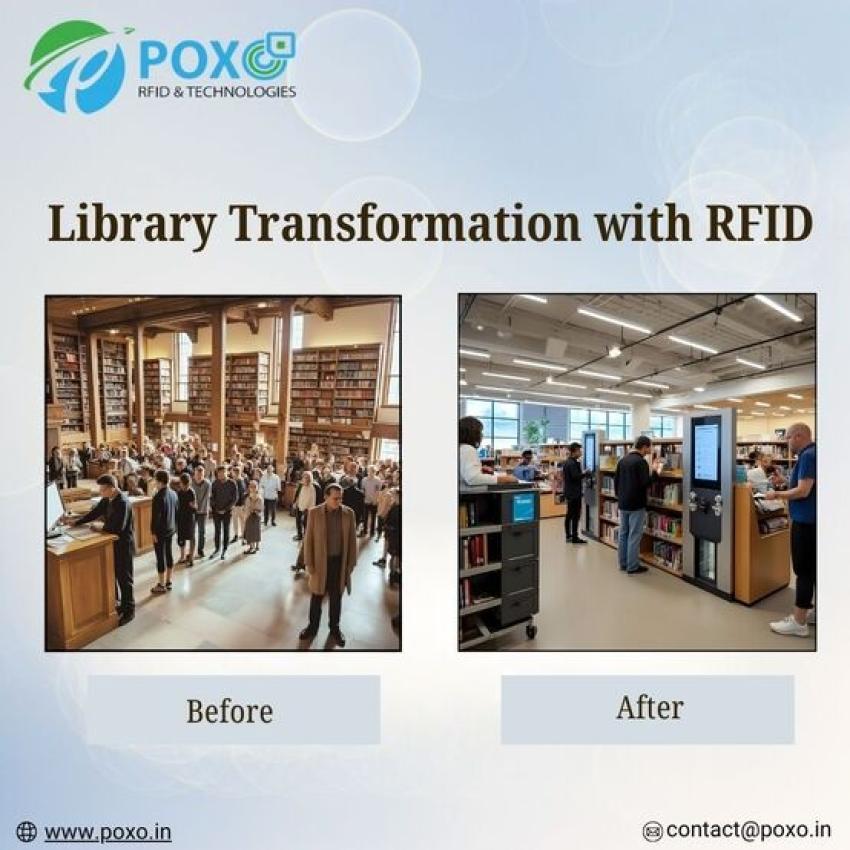
Libraries are more than just a space for books; they're impactful learning environments, and that environment is usually populated with students, researchers, and the general public, especially during busy times like examinations or standard assignment due dates. Busy times usually mean people are waiting to be served, creating prolonged wait times to issue or return books, and the process of finding your materials can be related to extreme user dissatisfaction. This is where the RFID Library Management System is an irrelevant and user-friendly system that truly embodies the library experience.
RFID (Radio Frequency Identification) technology aids in tracking, identifying and automating library resources through the materials use of RFID Tags, RFID Readers, and intelligent systems. The main advantage of RFID vs. traditional barcode technology is speed and automation. During busy hours, when multiple hundreds of users are in contact with the system, RFID minimizes wait time and enhances efficiency by a great extent.
Long queues at the circulation desk are one of the greatest pains during busy hours. Be it book issue or return, it's time-consuming in a traditional barcode-based system — the librarian has to scan each item individually, check user information, and process the transaction. With RFID, the process is contactless and instantaneous. RFID-tagged books can be scanned in bulk, even without direct line of sight. That implies a user returns five books simultaneously, and they all get registered in seconds.
Self-check-in and self-check-out machines are another significant plus point. RFID technology-powered machines enable users to return or borrow books by themselves without requiring any staff help. Not only does this cut down the waiting line, but it also gives users complete control over their library time, particularly useful during rush hours when seconds are of value. A student with only ten minutes between classes can easily check out a book through the self-check machine rather than standing in line.
Another usual frustration in peak periods is finding a particular book or determining its availability. Staff can employ handheld RFID readers to quickly scan shelves and reveal lost or missing books with an RFID Library Management System. It makes manual searches no longer necessary. RFID software systems are also usually integrated with the online portal of the library, so the users are able to observe in real-time whether a book is available, borrowed, or lost.
For library workers, peak periods can be harrowing — hundreds of students, a stack of returns, and non-stop queries. RFID systems alleviate the stress by automating most processes. RFID dropboxes, for instance, will automatically scan and record books when they are dropped off, even outside of work hours. The system refreshes the library database in real-time, so there is no fear of late return records because of a backlog on the staff's part.
Security is also an area where RFID technology excels. At peak times, opportunities for unauthorised removal or accidental exit are higher. RFID security gates automatically detect any book without a valid issue-out being taken out and alert staff in real time, preventing theft and loss, without the need for manual bag searches or confrontation.
What makes RFID ideal for peak-hour traffic is its scalability. RFID systems can speed through 200 visitors a day or 2000, without slowing down. They quickly complete multiple transactions, record data automatically, plus report in real-time. All of these features work together to make the library smarter and faster.
Companies such as Poxo RFID Automation are assisting Indian institutions in setting up trusted and affordable RFID Library Management Solution. With experience in hardware, software, and integration, Poxo ensures that schools and colleges with meager resources can make their libraries more in line with contemporary expectations. The objective is not merely digitization, but also minimizing daily woes for users as well as staff.
In a faster-paced world by the day, RFID systems are ensuring that libraries do not fall behind.RFID technology addresses the largest user challenges during busy rush hours: shorter queues, better tracking of books and items, automated book returns, and improved security. This is much more than just a technology upgrade; it is about providing a better, stress-free learning environment for everyone.




